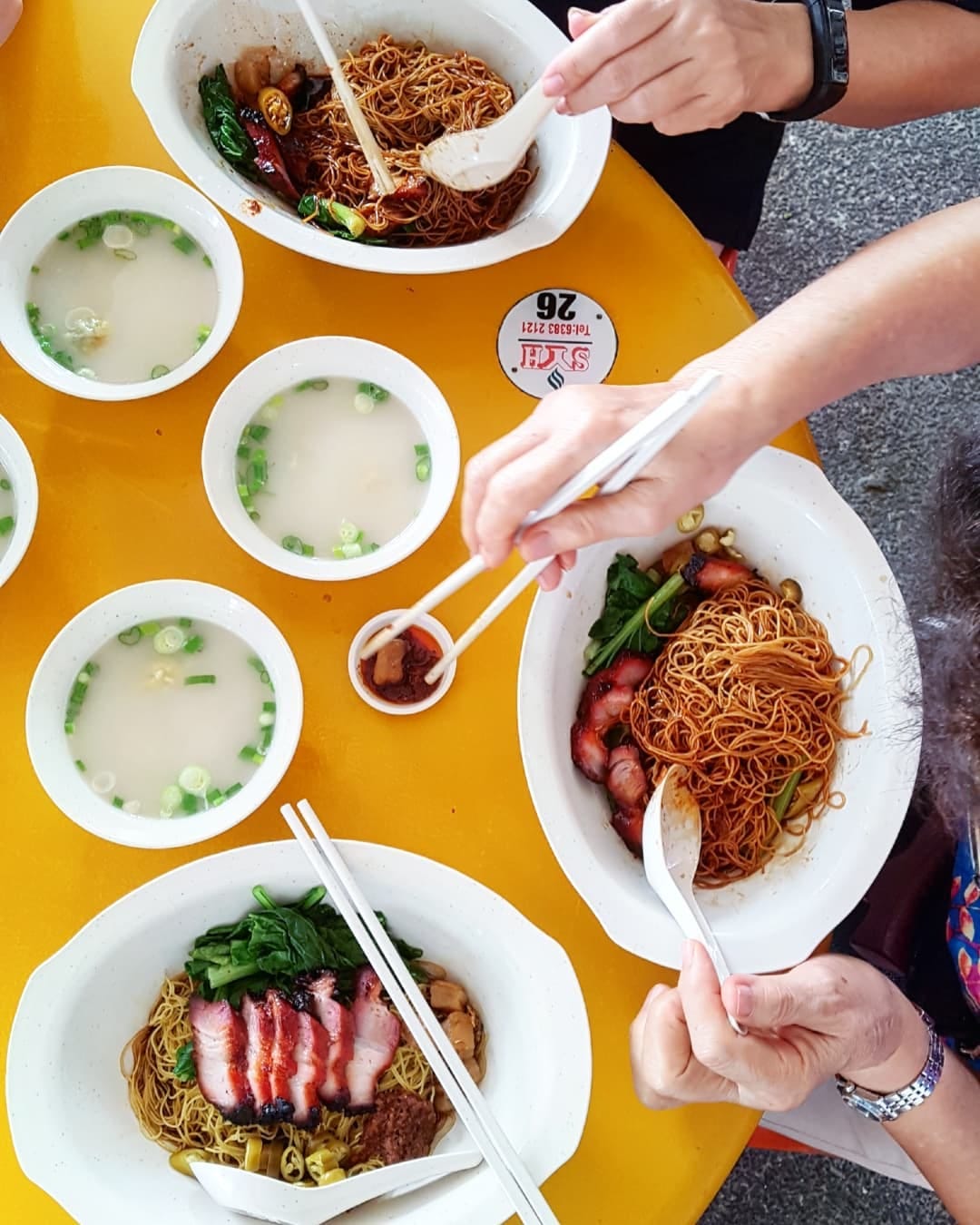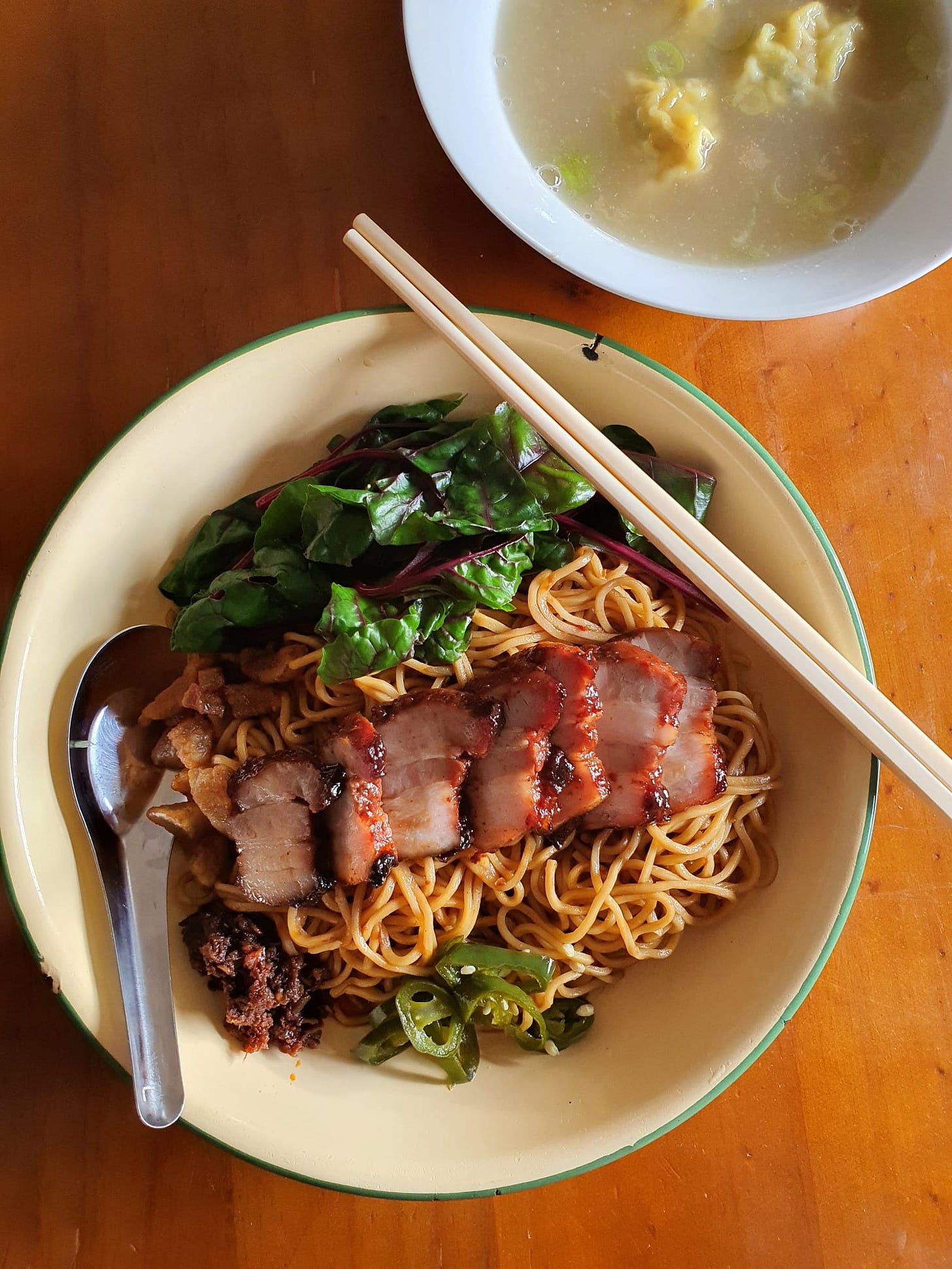Hello from Singapore! It’s been a wonderful but crazy week eating as much hawker food as my stomach allows with friends and family. The most common phrase that I hear is, “You should eat as much as you can now. In a few more years, this will all be gone.”
The challenges that hawkers face are glaringly obvious. The younger generation does not want to take over the business, and neither do the parents wish such a life for their children. The other hurdle is pricing. Because Singaporeans have been so used to hawker food being affordable for so long, you really do feel the pinch when prices rise above the norm with inflation. On my last trip home pre-COVID, I could enjoy my favourite fish noodle soup for S$3.50. Now, the same bowl of noodles is priced at S$5.50. Today, I ordered thunder tea rice with a few pieces of Hakka yong tau foo, and the bill came up to S$9.50.
Living in Australia has definitely changed the way I think about the way food should be priced, as an average meal at a no-frills eatery costs at least AUD15-20. It would be a lie to say that I do not reflexively flinch at the raised hawker prices, but I do believe in paying more for hawker food as most of the time it involves a lot of work for a single dish. Also, it is every bit as delicious as, say, a plate of pasta.
Just using wonton mee as an example, you have egg noodles tossed in dressing, crispy cubes of lard, pickled green chillies, sambal, leafy greens, wontons with prawns and pork, a broth on the side, and char siu.
While some might argue that a certain stall’s lard isn’t freshly fried, the broth takes ‘shortcuts’, or the wontons are not filled generously with prawns, we have to understand that the hawker is limited by an extraordinarily low price ceiling. This is why I really take my hat off to hawkers who insist on quality regardless.
Wonton mee was never a favourite hawker dish of mine. I like it, but don’t go out of my way to eat it… until I ate at Chef Kang’s Noodle House at Toa Payoh (Jackson Square) a few years ago.
Every single component is prepared meticulously and thoughtfully. The noodles are bamboo pole noodles (竹升面 jook sing min) from Hong Kong. This is a dying craft; one end of bamboo would be hooked to the wall while the artisan bounces on the other end like a seesaw, working the eggy dough to optimal thickness and texture. The noodles at Chef Kang’s are said to be dressed in Kwong Woh Hing - dark soy sauce that is fermented locally. And then there are the perfect cubes of lard. Milky pork broth. Plump wontons with wood ear and prawn running through the pork mince. Charcoal-roasted char siu. Artfully plated - honestly look at the photo! - and skimping on nothing, all for the price of S$6.
Chef Kang’s wonton mee is now on my list every time I make a trip home. It also raises the bar for my own homemade wonton mee.
To me, the soul of wonton mee lies in the soup. One whiff of it and I am home. After doing a bit of reading, I’ve learnt that wonton mee broth is not just a plain pork broth. Like the wontons that float in it, it is a marriage of pork and seafood. Sometimes dried solefish (teepoh) are used, but I’ve also read about the use of ikan bilis (dried anchovies) and dried scallops, which can be more readily found at Asian grocers.
The minute I lifted the lid on the soup, Wex and I both exclaimed that it really does smell like wonton mee. It’s funny because when I ate wonton mee in the past, I always thought that the distinctive scent of the soup came from the alkaline egg noodles. Turns out that it comes from dried, salted seafood!
The dressing itself is simple: dark soy sauce, sambal (I used XO sauce because that was what I had on hand), rendered lard, and a couple of spoonfuls of soup to thin the mix out. There are also some stalls that toss their noodles purely in rendered lard.
I topped the dressed noodles with home-fried lard croutons, vegetables from the garden, homemade char siu, pickled green chillies and a dab of XO sauce. On the side, I had homemade wontons warmed in pork broth, just like it’s done at Chef Kang’s. By the time everything was put on a plate, there was such a feeling of gratitude for our hawkers who put together plate after plate of spectacular food at single-digit prices, and a sense of something precious to relish and protect before it’s gone.
Wonton mee
Serves 4






